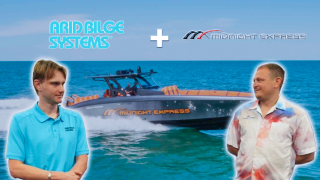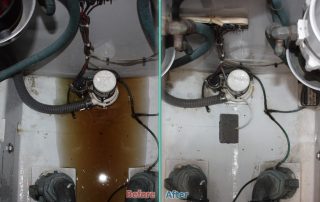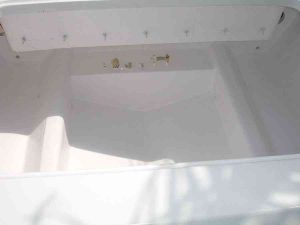Midnight Express + Arid Bilge Systems: Interview with Eric Glaser of Midnight Express Powerboats
Alfred Baurley of Arid Bilge Systems interviewed Midnight Express Boats‘ Eric Glaser at the 2024 Miami Boat Show to talk about the Arid Bilge System.
See below for a transcript of the entire interview.
Interview Transcript
Alfred: Hello, I’m Alfred Baurley with Arid Bilge Systems here at the Midnight Express booth talking with Eric about the Arid Bilge System and how it’s improved their line of boats, making a cleaner, fresher, drier boating experience. Eric, can you tell me a little bit about your experience, how the Arid Bilge System has worked on your Midnight Express boats?
Eric: Yeah, absolutely. We offer it on all of our models. It helps keep the bilge dry, clean, so you’re not worried about all the corrosion and the “black bilge” and all that. It’s a great option. You guys have a bunch of different versions and different power supply options and it works for us depending on which way we’re powering the boat.
Alfred: Where is the system located on the boat?
Eric: We mount them in the rear bilge of the boat on every model.
Alfred: What locations does it vacuum from on your line of boats?
Eric: We do it in our rear bilge, one in the mid bilge, and then depending on what customers ask for, sometimes we do it up by a bow thruster where they might catch a little bit of water. Just keeping that little bit of water out of the boat.
Alfred: This has improved your line of boats in making everything nice and dry versus having a wet and moldy environment, you know, protecting your Seakeeper, your generator, all these sensitive components that are down there. Having a dry environment versus a wet environment is a lot better to make everything run smoother on the vessel.
Eric: Of course, it’s all good things. Water messes everything up and we’re in a wet environment in a boat.
Alfred: Right. Eric, I really appreciate your time. Thank you for being really generous.
Eric: No problem. Thanks for making a great product. Keep it up!
Alfred: I appreciate it. Thanks, man.




